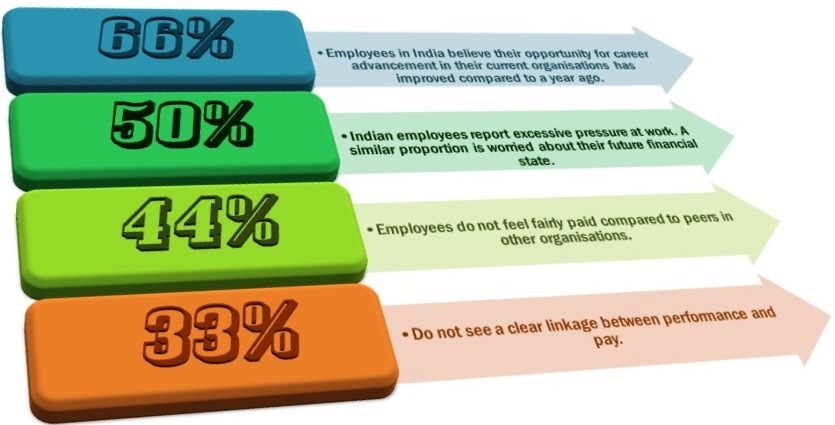As per Towers Watson, in India around 42 per cent of highly engaged employees are likely to call it quits whereas the global average is only 26 per cent.
Companies often like to believe that high employee engagement keeps the attrition rate low. However, the truth is likely to be different. The Global Workforce Study 2014 study by Towers Watson, a global people management consultancy, reveals that even highly engaged employees (42 per cent) are likely to leave the company in two years-time. The number is even higher for unsupported, disengaged and detached employees in that order.
The global average for the same is a dismal 26 per cent.
The report reveals that the factors that are essential to retain an employee are very different from engagement activities, which is why companies need to have different priorities for retention.
The key drivers for retention are supposedly base pay, job security, length of commute, retirement benefits, whereas sustainable engagement depends on creating an active workplace, and adding experience elements such as role, empowerment, supervision, performance management, etc.
“It is important for organisations to appreciate the differing drivers of engagement and retention, and in doing so assess and address succession risk, especially among critical talent,” says Shatrunjay Krishna, director – talent management and organisational alignment, Towers Watson India.
The top priorities for joining and staying in a company are uniform globally – pay package and career advancement opportunities. However in India, the distance between home and workplace enjoys a greater importance than the global average, where employees’ trust on the senior leadership team is the key driver for attracting and retaining talent.
What’s interesting is that only 52 per cent of respondents globally feel that their senior leadership is effective at their jobs where as the figure is as high as 72 per cent for Indians.
In order to create a sustainable engaging work environment, Indians put goals and objectives of the company as a key driver. For instance, good understanding of organisation’s business goals, steps needed to attain those goals and also being aware of how their job contributes to the realisation of the organisation goal are considered to be highly engaging. This is quite different from the 2012 report where participating employees chose stress-free environment and work-life balance as top priorities.
When Indian employees are pit against their global counterparts, the survey revealed that Indians find it more engaging to work with a growing company where they can equally contribute to the company’s growth plan compared to China, where the image of the company is the top priority – if the organisation is highly regarded and conducts its business with honesty and integrity.
Similarly, in Hong Kong, empowerment scores over other factors where as in Indonesia, being treated with respect and encouragement to innovate are considered to be the most favourable drivers of engagement.
However, at an average global level, the most important factor in sustainable engagement is leadership quality of the organisation where the company takes sincere interest in the well-being of the employee and showcases trust and confidence in the job being done.
Regarding the relationship with the manager and his/her team, both Indian employees and its global counterparts consider being treated with respect as the biggest differentiator. However, the point of difference between the two segments is on ideas and goals.
Indians prefer managers who encourage new ideas and actions and also help them remove obstacles, whereas globally, people prefer managers who communicate the goals and assignments clearly and also who lead by example.




1 Comment
there are managers esp in India who prefer egg and bread providers sort of employees too.